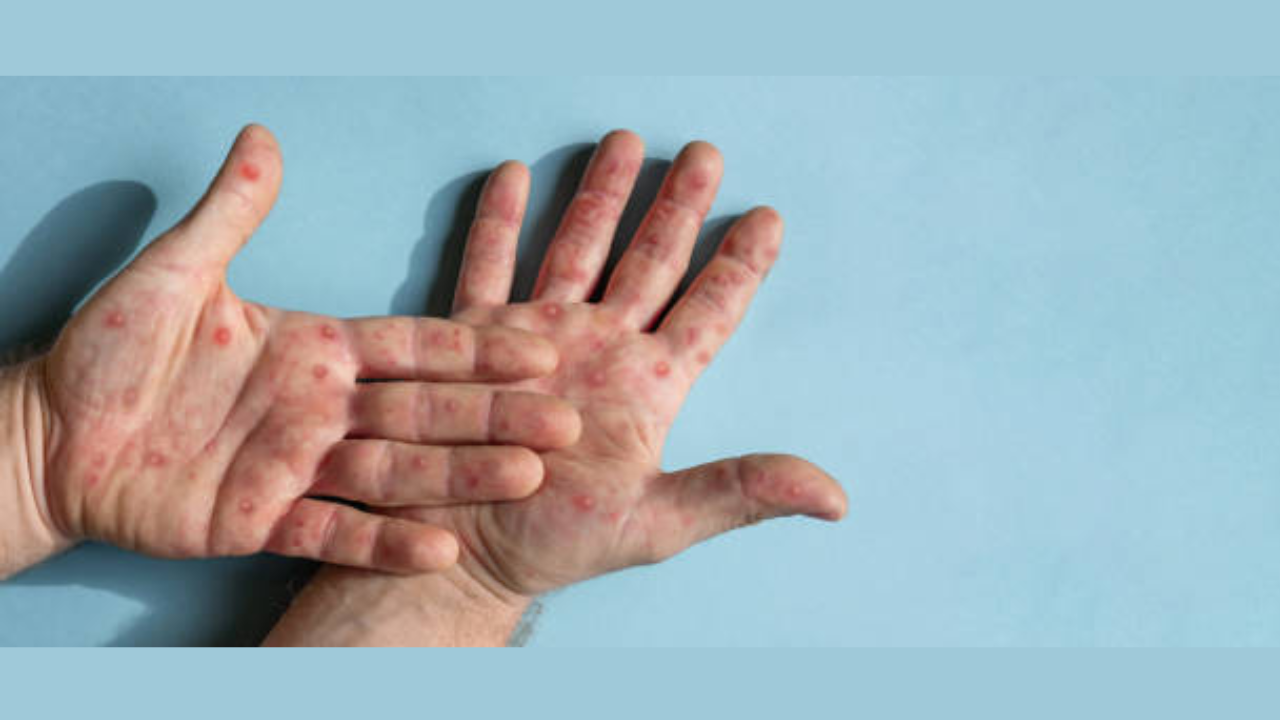It is not clear yet which variant was detected in the patients. All the three patients have been quarantined.
Symptoms seen in the patients
The 34-year-old male resident of Mardan arrived in Pakistan on August 3 and developed symptoms shortly after arriving in Peshawar and reached out to the hospital for testing.
Monkeypox typically begins with flu-like symptoms, including fever, headache, muscle aches, and backache. This is followed by swollen lymph nodes, which is a distinctive feature of the disease, and general exhaustion. After a few days, a rash develops, starting on the face and spreading to other parts of the body. The rash progresses from flat spots to raised bumps and then to fluid-filled pustules that eventually crust over and fall off. The disease’s progression often resembles that of smallpox but is usually milder. Severe cases can lead to complications, including secondary bacterial infections and, rarely, death.
In Pakistan, 11 cases have been reported since April 2023, with one resulting in death.
Monkeypox is a global threat: WHO
The World Health Organization has declared the recent outbreak of the disease as a public health emergency of international concern after a new variant of the virus has been identified.
Its transmission can occur between humans through close contact with infected individuals, their respiratory droplets, or contaminated materials. The recent surge in cases outside traditionally affected regions, particularly in Central and West Africa, has raised alarm. This spread has been facilitated by international travel and increased global connectivity.
While the overall fatality rate is lower compared to smallpox, it can be significant in certain cases, particularly among those with weakened immune systems or pregnant women. The disease’s symptoms can be severe and debilitating, posing a public health challenge.
Monkeypox is a viral disease caused by the monkeypox virus, which belongs to the Orthopoxvirus genus in the Poxviridae family. It was first identified in 1958 in monkeys used for research, and the first human case was reported in the Democratic Republic of the Congo in 1970.
Monkeypox is a zoonotic virus, meaning it can be transmitted from animals to humans. It primarily affects rodents and occasionally monkeys, with humans contracting the virus through direct contact with infected animals or their bodily fluids.
The disease presents with symptoms similar to smallpox, though generally milder. These include fever, headache, muscle aches, backache, swollen lymph nodes, chills, and exhaustion, followed by a rash that progresses from flat lesions to raised bumps and then to pustules before crusting over. Severe cases can lead to complications such as secondary bacterial infections, respiratory issues, and sometimes death.
Monkeypox declared global public health emergency: What is it and why is it a global threat?


